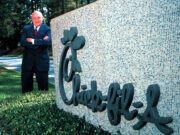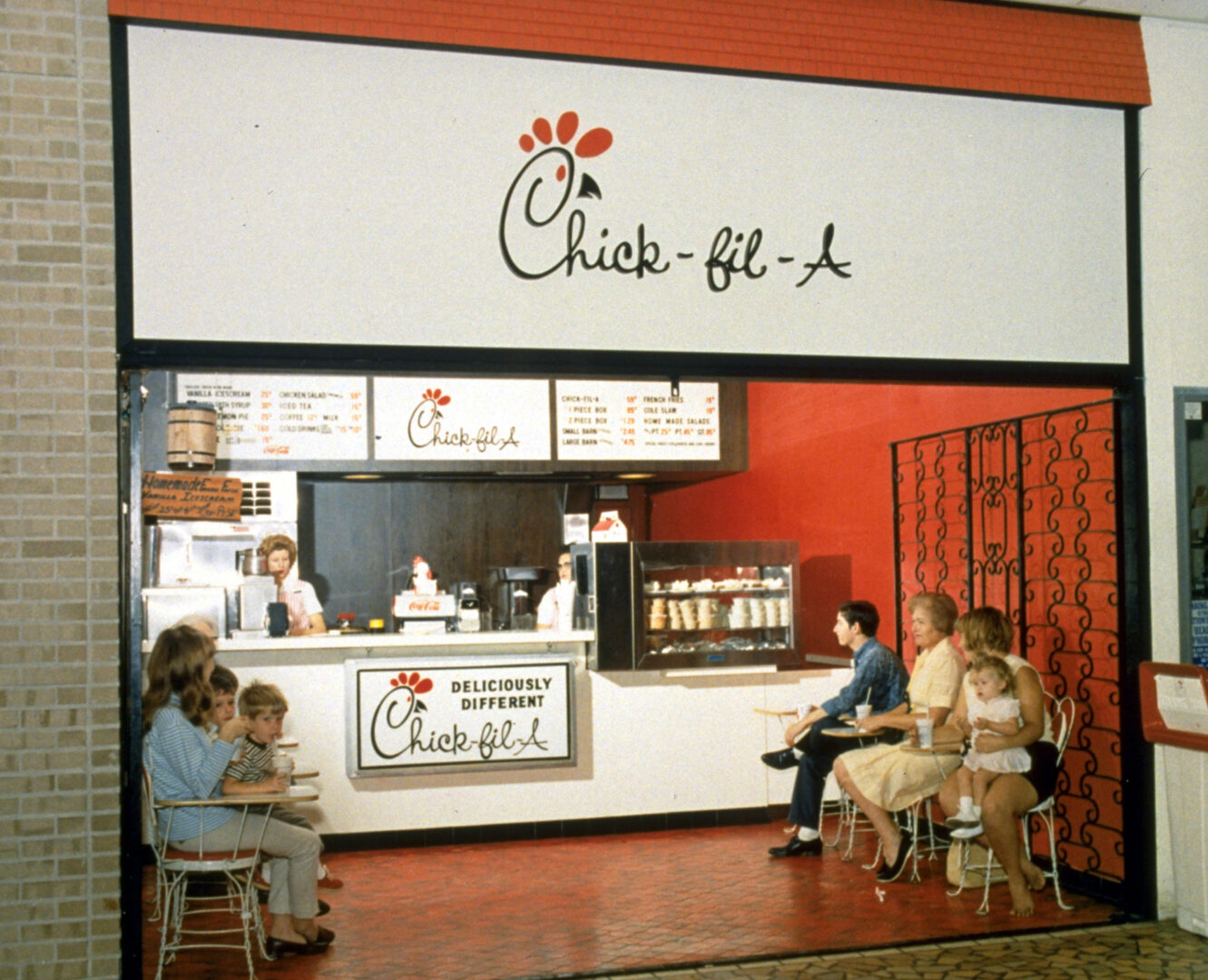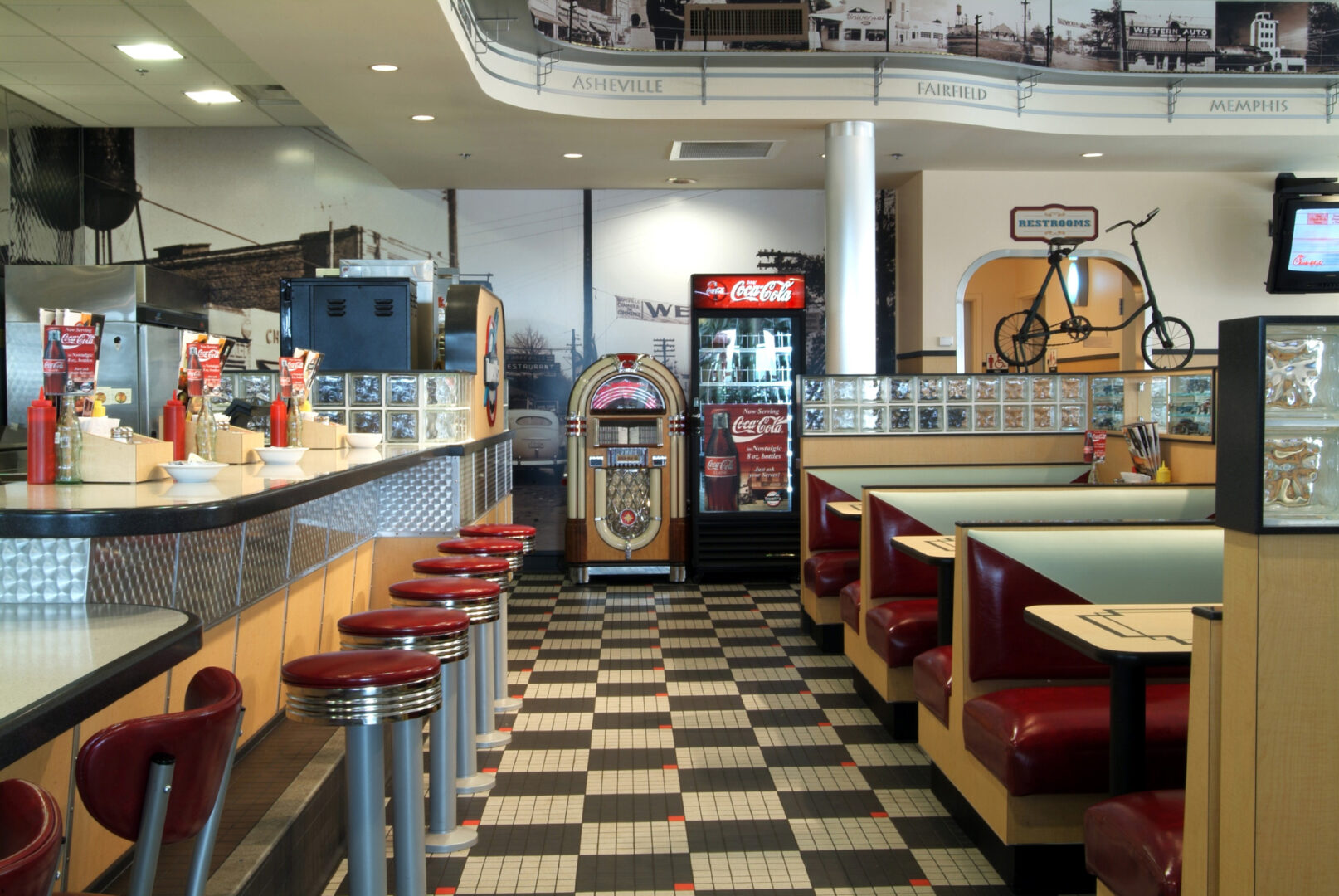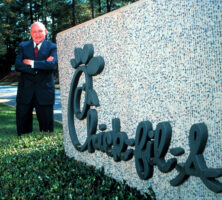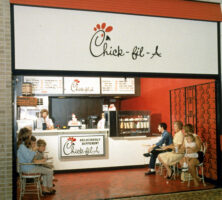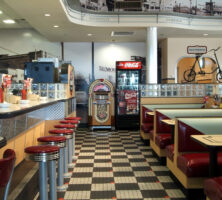Founded in the 1940s as the Dwarf Grill by Truett Cathy in the Atlanta suburb of Hapeville, Chick-fil-A grew to include more than 1,800 restaurants in the United States by 2014, with annual sales of more than $5 billion in 2013. The company, which specializes in the “original” boneless chicken breast sandwich, is one of the largest privately held restaurant chains in the United States and is the nation’s largest fast-food chicken restaurant.
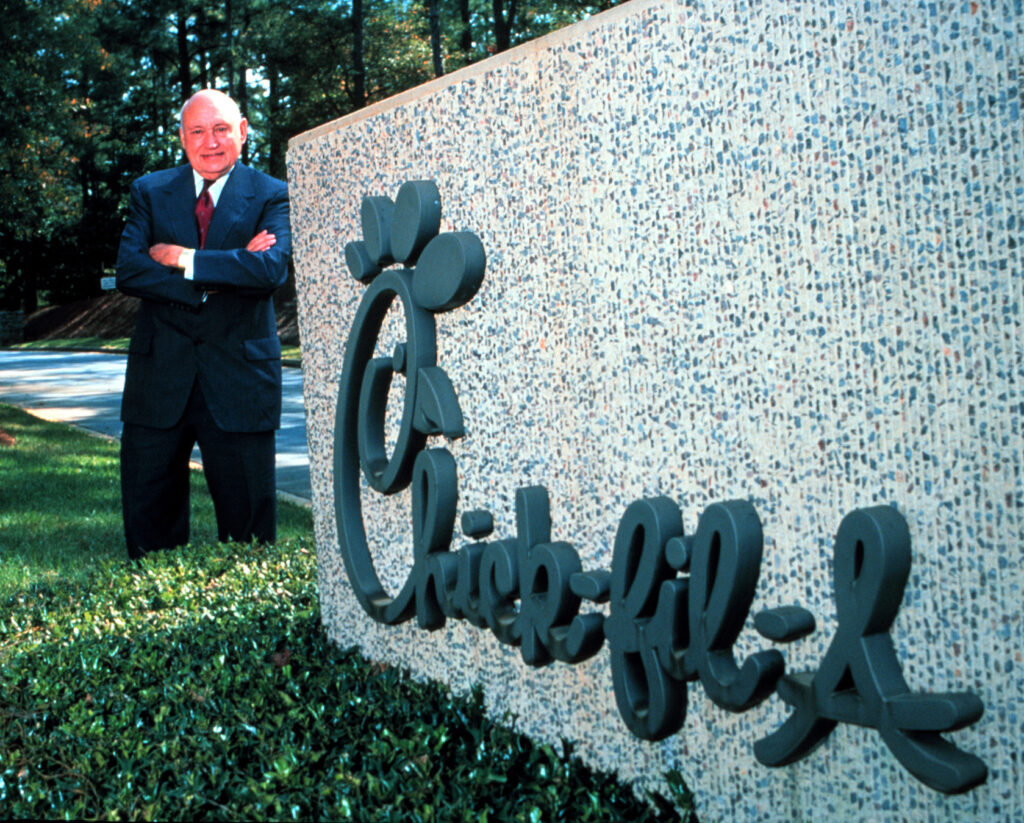
Courtesy of Chick-fil-A
Chick-fil-A has distinguished itself in the hospitality industry with such practices as opening properties in shopping malls, sponsoring college football’s Chick-fil-A Bowl in Atlanta and the Ladies Professional Golf Association’s Chick-fil-A Charity Championship (hosted by Nancy Lopez) in Stockbridge, creating award-winning advertising, and remaining closed on Sundays.
Cathy opened the Dwarf Grill—which he later renamed the Dwarf House—in 1946 and developed the pressure-cooked chicken breast sandwich there. Chick-fil-A sandwiches were first sold to individual restaurants around the country while Cathy pondered expansion of his own business. When the Astrodome in Houston, Texas, opened in 1965, Chick-fil-A sandwiches were sold there, as they were in the Atlanta Stadium (later Atlanta–Fulton County Stadium) when it opened in 1966. The first Chick-fil-A restaurant opened in Atlanta’s Greenbriar Shopping Center in 1967.
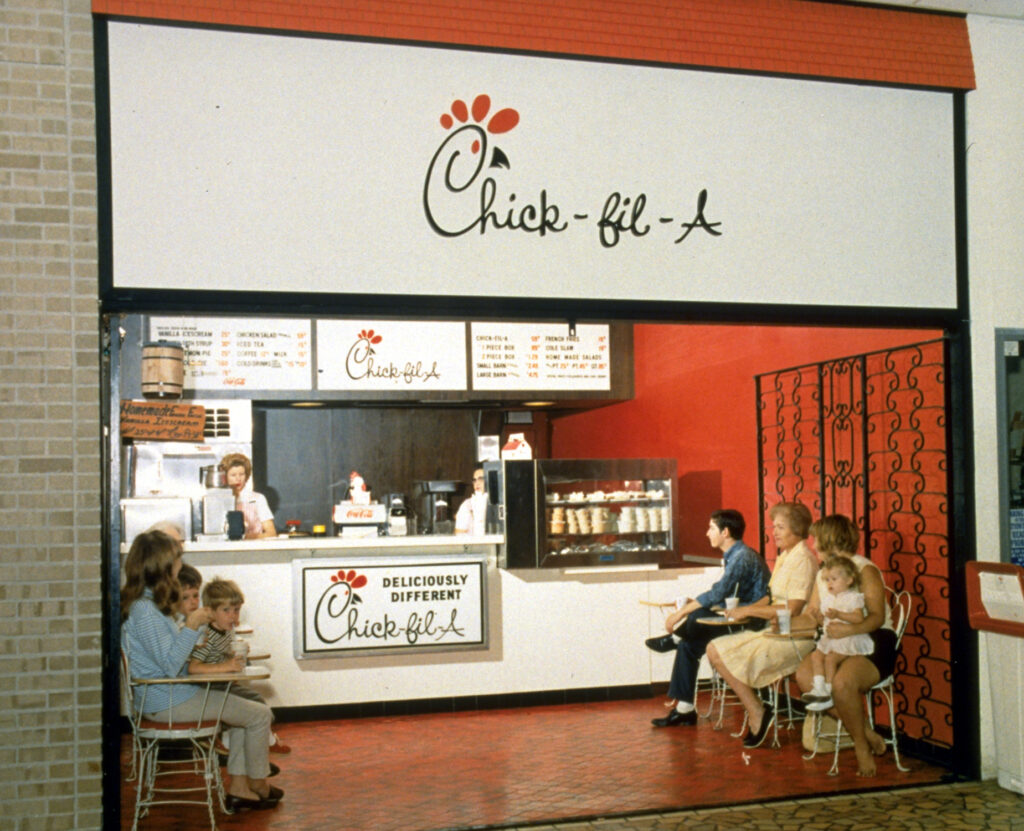
Courtesy of Chick-fil-A
In 1982, despite the company’s growth, its leaders faced a potential crisis. After other fast-food restaurants entered into the chicken sandwich business, Chick-fil-A sales diminished and the cost of chicken breasts increased. The company had just moved into a new $10 million Atlanta headquarters (where it remains) and was seeing a noticeable decline in revenues. Cathy assembled the company’s eight-person executive committee to develop what he termed “a corporate purpose”: “To glorify God by being a faithful steward of all that is entrusted to us. To have a positive influence on all who come in contact with Chick-fil-A.” Cathy reported that the next year’s sales increased 36 percent, and the company continued to see consecutive years of sales gains, including an 11.8 percent increase from 2002 to 2003.
Chick-fil-A has also proven to be inventive in its employment practices, providing franchise opportunities to potential operators for a commitment of only $5,000. The company has also established a program through which scholarships are available to any employee for the college or university of his or her choice; more than $30 million had been awarded to Chick-fil-A employees by 2014.
Recognizing early in the twenty-first century that fast-food patrons want a variety of nutritional choices, Chick-fil-A began offering such menu items as grilled chicken sandwiches, chicken strips, chicken wraps, and fruit cups.
Over its history Chick-fil-A has branched far beyond its early in-mall days, expanding to free-standing restaurants, drive-through-only operations, full-service Chick-fil-A Dwarf Houses (modeled after Cathy’s original restaurant), Truett’s Grill outlets (opened in 1996 to celebrate Cathy’s fiftieth anniversary in the business), and restaurants in such nontraditional locales as college campuses, hospitals, and airports.
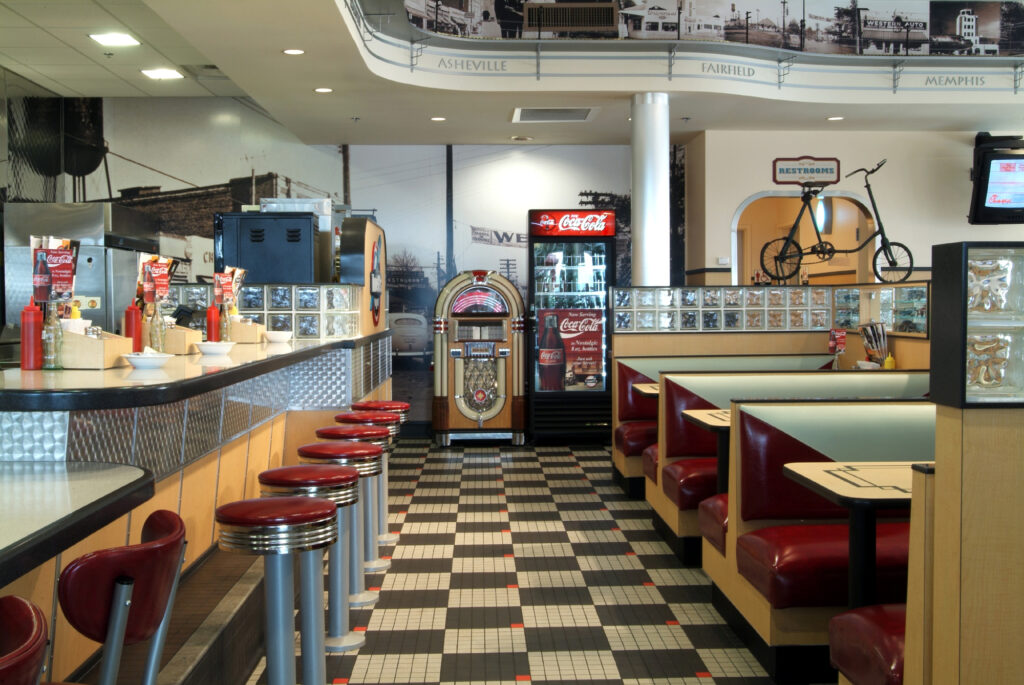
Courtesy of Chick-fil-A
Chick-fil-A has made its mark in the advertising world with its “Eat Mor Chikin” campaign, the most successful marketing effort in the company’s history. The campaign, which features cows, made its debut on Atlanta billboards in 1995. Since then the campaign has been honored by AdWeek magazine, the Cannes International Advertising Festival, and the Atlanta Business Chronicle. In 1996 Chick-fil-A received an OBIE Award, one of the most prestigious honors for advertising excellence, for outdoor advertising in the restaurant and food category.


